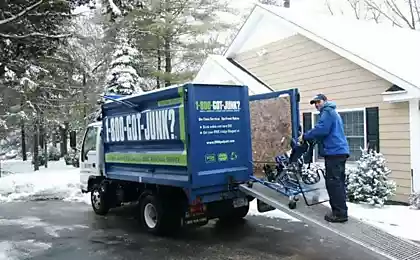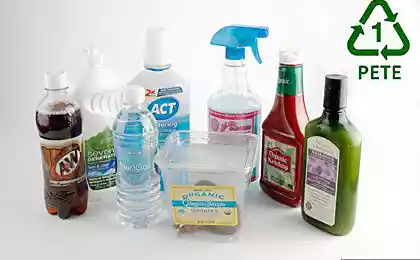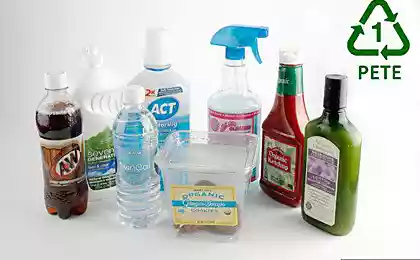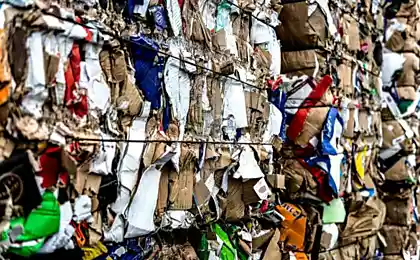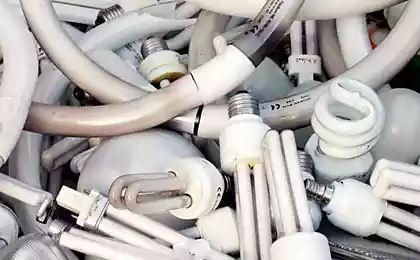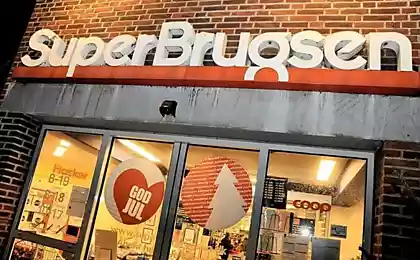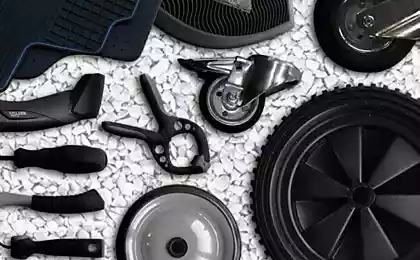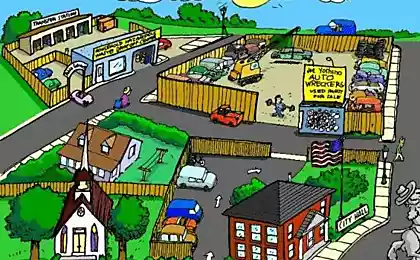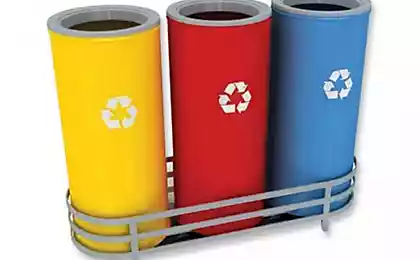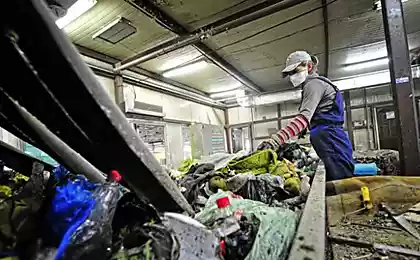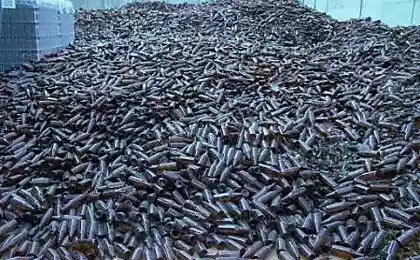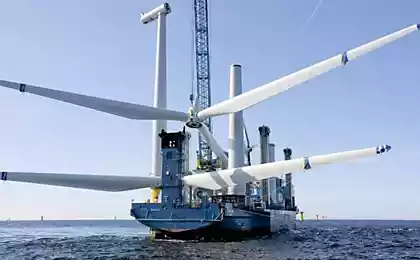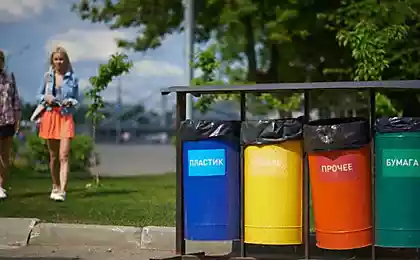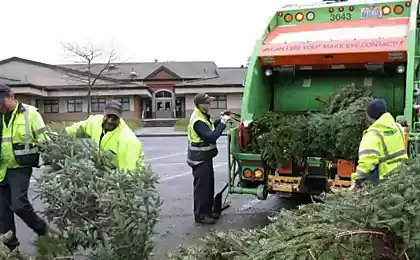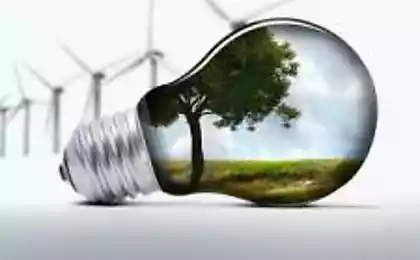470
10 trends in recycling and disposal
To get a better idea of where we are headed in the near future, good or bad, here are 10 upcoming eco-trends, which is a lot of talk lately.
The ban on plastic
It is no secret that the decomposition of most plastics take hundreds, if not thousands of years and that they are terribly dangerous to local ecosystems and wildlife. That's why many cities are starting to pay attention to the plastic waste generated within their borders. More and more cities are resorting to bans on the production of food packages made of foam.
Although the foam is cost-effective and durable enough for packing, the wind easily carries it everywhere and its constituent compounds such as styrene seep into the ground and groundwater.
Bans on Styrofoam, plastic packaging, plastic bags and bottles, we hope, will be the impetus for phasing out unsustainable and widespread plastics in other areas of our lives.
From paper to digital format
In the United States in 2012 signed a law On transition to digital document management system up to 2015". This will allow you to generate significantly less waste and makes the tracking of industrial and commercial waste in a much more streamlined and efficient process.
Biodegradable plastic
The market for biodegradable plastic resins has grown steadily over the years and is currently expected market growth of 19% until 2017. Plastic labelling bio-based "PLA" — continue at the forefront of the movement, it applies in different markets and industries. Some possible applications include car parts, clothing and even electrical components. Nevertheless still is an issue of refining, recycling and composting of products such a plastic.
Mandatory Composting
Only 5% of the 26 million tons of food waste in 2012 avoided a landfill. This means that there are still millions of tons of food lying on the bottom of the landfill, which could turn into healthy compost for your personal or municipal use. That's why more municipalities in different countries are beginning to create programs for the development of organic composting, and some even make it mandatory. We can only hope that this increased interest in composting will increase.
Sustainable Innovation
Swedish student umeå has developed in 2013 a draft design of the ERO — a robot that can actually dispose of the building, made of concrete and rebar. Although this is just a conceptual project, but the idea that all the concrete buildings can be theoretically recycled, already, is a groundbreaking achievement of design. In the future sustainable innovation will occur more often and faster.
3-D Printers
3-D printing has opened new horizons for the production, which previously we could not even dream of: ranging from commercial use and mass production, up to the individual, private use at home. 3-D printing technology able to build a house in one day. Of course, this technology runs the risk of increasing our dependence on plastic even more. Although some 3-D printers ready to use recycled plastic to print. Just imagine, a whole new market will open up for plastic waste to be used in 3-D printing? Some recycled plastics are often cheaper than new.
Energy from organic waste
California became a center for the development of pilot projects in the field of eco-technologies, anaerobic technology for food processing is no exception.
In Sacramento County, called the system of anaerobic digestion of the Sacramento BioDigester" can take food and other biodegradable waste and convert it into bioenergy. Here it is possible to process about 100 tons of organic material per day. Imagine if every major city had such a system.
Processing... Cigarettes?
According to statistics, up to 40% of the trash consists of cigarette and tobacco wastes. The company TerraCycle has developed a program of disposing of cigarettes and every person or organization in the age of 21 can actually collect and send cigarette waste directly to TerraCycle. The tobacco and paper they turn into compost and cellulose filters are processed into industrial plastic products such as transport pallets. More and more people begin to understand that this might be a solution for a huge waste stream, and we hope in the future this process will only grow.
Improving corporate responsibility
So easy to make empty promises of praise "corporate social responsibility", but more and more companies and businesses begin to do what they say.
We are entering the era of conscious consumption and conscious public, respectively increasing efforts in self-regulation in the recycling and sustainable development. Well-informed consumers continue to demand that companies buy their products from a more socially responsible and environmentally conscious suppliers. And it affects the overall picture of liability in General.
The growing e-waste problem
According to STEP (organization for solving the e-waste problem), in 2012 in the U.S. only produced about 50 million tons of e-waste. Most of these extremely toxic wastes are sent to third world countries, where they turn into giant piles of unprocessed garbage. The growth of the flow of these dangerous wastes is becoming increasingly difficult to ignore it. We can expect increased debate on this topic all over the world.
Every step in the field of recycling and retsirkulyatsii gives us hope that we will be able to change the vector of our development in a sustainable and environmentally friendly.
Only registered and authorized users can leave comments.
Source: rodovid.me
The ban on plastic
It is no secret that the decomposition of most plastics take hundreds, if not thousands of years and that they are terribly dangerous to local ecosystems and wildlife. That's why many cities are starting to pay attention to the plastic waste generated within their borders. More and more cities are resorting to bans on the production of food packages made of foam.
Although the foam is cost-effective and durable enough for packing, the wind easily carries it everywhere and its constituent compounds such as styrene seep into the ground and groundwater.
Bans on Styrofoam, plastic packaging, plastic bags and bottles, we hope, will be the impetus for phasing out unsustainable and widespread plastics in other areas of our lives.
From paper to digital format
In the United States in 2012 signed a law On transition to digital document management system up to 2015". This will allow you to generate significantly less waste and makes the tracking of industrial and commercial waste in a much more streamlined and efficient process.
Biodegradable plastic
The market for biodegradable plastic resins has grown steadily over the years and is currently expected market growth of 19% until 2017. Plastic labelling bio-based "PLA" — continue at the forefront of the movement, it applies in different markets and industries. Some possible applications include car parts, clothing and even electrical components. Nevertheless still is an issue of refining, recycling and composting of products such a plastic.
Mandatory Composting
Only 5% of the 26 million tons of food waste in 2012 avoided a landfill. This means that there are still millions of tons of food lying on the bottom of the landfill, which could turn into healthy compost for your personal or municipal use. That's why more municipalities in different countries are beginning to create programs for the development of organic composting, and some even make it mandatory. We can only hope that this increased interest in composting will increase.
Sustainable Innovation
Swedish student umeå has developed in 2013 a draft design of the ERO — a robot that can actually dispose of the building, made of concrete and rebar. Although this is just a conceptual project, but the idea that all the concrete buildings can be theoretically recycled, already, is a groundbreaking achievement of design. In the future sustainable innovation will occur more often and faster.
3-D Printers
3-D printing has opened new horizons for the production, which previously we could not even dream of: ranging from commercial use and mass production, up to the individual, private use at home. 3-D printing technology able to build a house in one day. Of course, this technology runs the risk of increasing our dependence on plastic even more. Although some 3-D printers ready to use recycled plastic to print. Just imagine, a whole new market will open up for plastic waste to be used in 3-D printing? Some recycled plastics are often cheaper than new.
Energy from organic waste
California became a center for the development of pilot projects in the field of eco-technologies, anaerobic technology for food processing is no exception.
In Sacramento County, called the system of anaerobic digestion of the Sacramento BioDigester" can take food and other biodegradable waste and convert it into bioenergy. Here it is possible to process about 100 tons of organic material per day. Imagine if every major city had such a system.
Processing... Cigarettes?
According to statistics, up to 40% of the trash consists of cigarette and tobacco wastes. The company TerraCycle has developed a program of disposing of cigarettes and every person or organization in the age of 21 can actually collect and send cigarette waste directly to TerraCycle. The tobacco and paper they turn into compost and cellulose filters are processed into industrial plastic products such as transport pallets. More and more people begin to understand that this might be a solution for a huge waste stream, and we hope in the future this process will only grow.
Improving corporate responsibility
So easy to make empty promises of praise "corporate social responsibility", but more and more companies and businesses begin to do what they say.
We are entering the era of conscious consumption and conscious public, respectively increasing efforts in self-regulation in the recycling and sustainable development. Well-informed consumers continue to demand that companies buy their products from a more socially responsible and environmentally conscious suppliers. And it affects the overall picture of liability in General.
The growing e-waste problem
According to STEP (organization for solving the e-waste problem), in 2012 in the U.S. only produced about 50 million tons of e-waste. Most of these extremely toxic wastes are sent to third world countries, where they turn into giant piles of unprocessed garbage. The growth of the flow of these dangerous wastes is becoming increasingly difficult to ignore it. We can expect increased debate on this topic all over the world.
Every step in the field of recycling and retsirkulyatsii gives us hope that we will be able to change the vector of our development in a sustainable and environmentally friendly.
Only registered and authorized users can leave comments.
Source: rodovid.me
